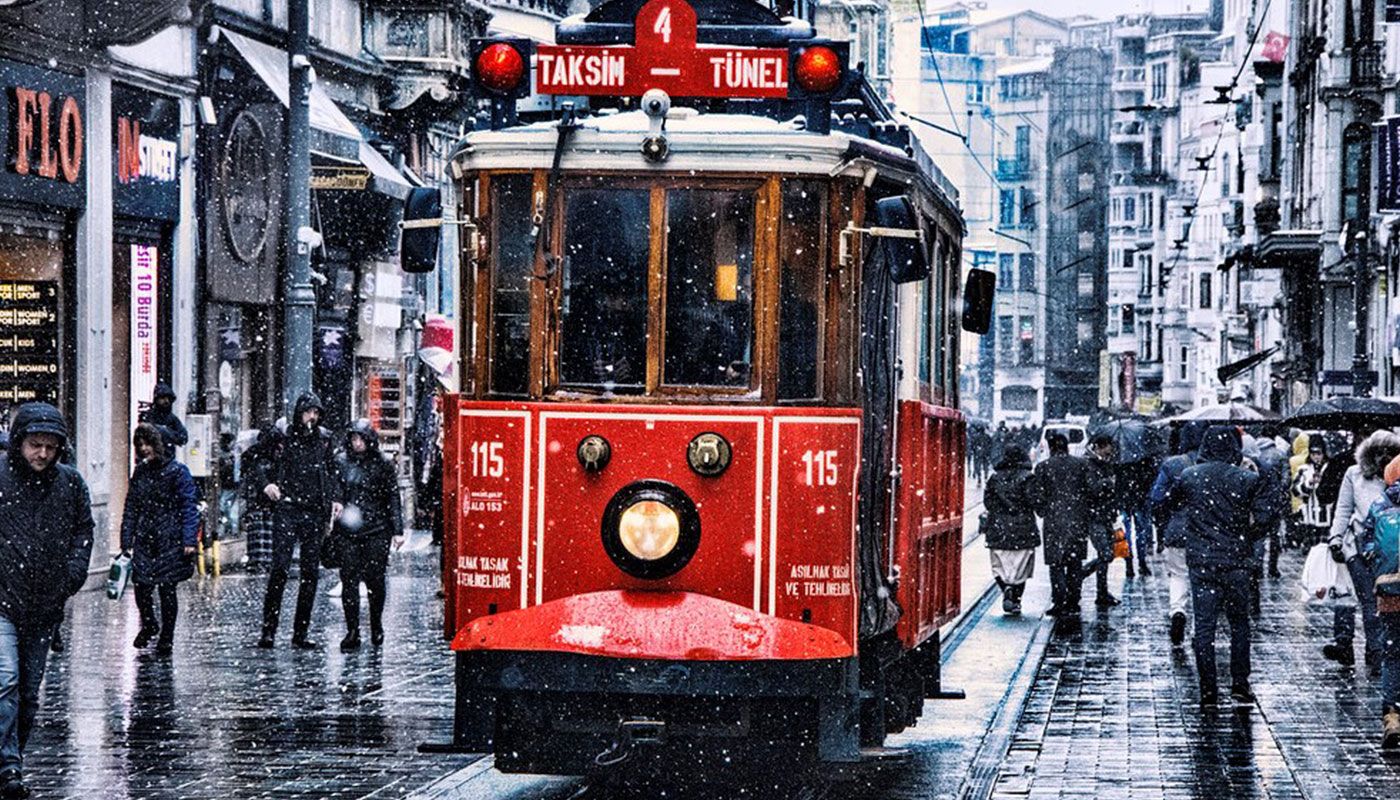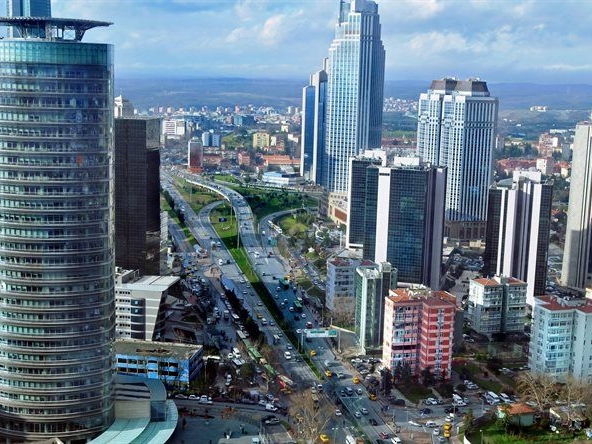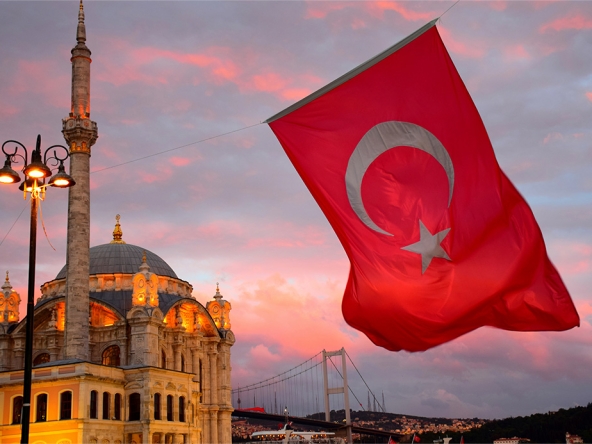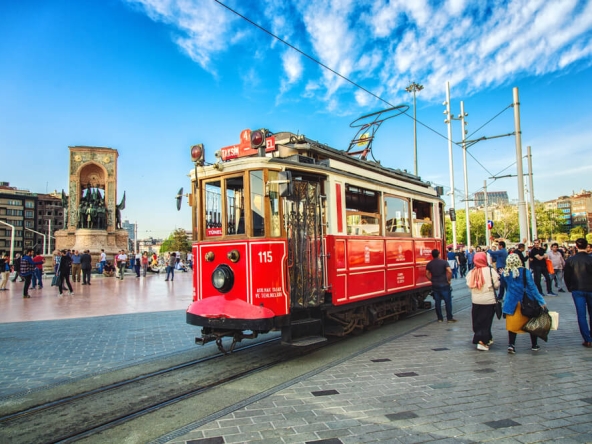Transportation in Istanbul / Turkey
Istanbul is one of the largest cities in the world in terms of population and ancient history, Istanbul is famous for its rich history, amazing architecture, and beautiful nature.
Istanbul is also a diverse city in terms of cultures, languages, and cuisines, where many restaurants, cafes, and Markets offering local and foreign products can be found. It is also possible to enjoy the green parks and beaches scattered in the city.
In order to enjoy your time in Istanbul you need to understand the best transportation methods in the city. Istanbul has a large network of public transportation, including two big Airports, the Metro, buses, and tramlines.
Today we will explain to you some of the most prominent transportation methods in the city, and we chose to focus on the transportation methods that are not affected by traffic:
Transportation on the European side:
1- Metrobus line (Metrobus):
It is the most widely used public transportation in Istanbul, and it passes with a private lane on the E5 Highway through 44 different areas on the European side and the Asian side, including the Bosphorus Bridge station.
There are 6 lines operating 24 hours a day with departure/ arrival from the last stop of Söğütlüçeşme, Zincirlikuyu, Cevizlibağ, Avcılar Merkezi – University Campus, and Beylikdüzü on the east-west axis of the Metrobus system, which has a length of 52 kilometers (32 mi) and 44 stations serving the city of Istanbul in Turkey.
There is a possibility to transfer from Sogutlucesme and Kucukcekmece stations to Marmaray; from Uzuncayir, Altunizade, Zincirlikuyu, Mecidiyekoy, Caglayan, Merter, Zeytinburnu, Incirli, Bahcelievler, Sirinevler, Yenibosna stations to Istanbul metro; from Ayvansaray-Eyup Sultan, Edirnekapi, Topkapi, Cevizlibag, Zeytinburnu stations to Istanbul Tramline.
All stations are accessible to the disabled except Uzunçayır, Acıbadem, Altunizade, Burhaniye Mahallesi, Halıcıoğlu, Ayvansaray – Eyüpsultan, Bayrampasa – Maltepe, Merter, Beşyol, Küçükçekmece stations.
On the front signs of Metrobus vehicles, the last station where the vehicle will go, namely Beylikdüzü, Avcılar, Cevizlibağ, Zincirlikuyu, and Söğütlüçeşme, has started to be written instead of the line number.
WHAT ARE THE METROBUS STOPS?
There are 44 metro bus stops in total, including 7 on the Anatolian Side and 37 on the European Side. The names of the Metrobus stops are as follows;
European Side:
– Beylikdüzü Son Durak (TÜYAP)
– Beykent
– Cumhuriyet Mahallesi
– Beylikdüzü Belediye
– Beylikdüzü
– Güzelyurt
– Haramidere
– Haramidere Sanayi
– Saadetdere Mahallesi
– Mustafa Kemalpaşa
– Cihangir – Üniversite Mahallesi
– Avcılar Merkez Üniversite Kampüsü
– Şükrübey
– Büyükşehir Belediye Sosyal Tesisleri
– Küçükçekmece
– Cennet Mahallesi
– Florya
– Beşyol
– Sefaköy
– Yenibosna
– Şirinevler (Ataköy)
– Bahçelievler
– İncirli – Ömür (Bakırköy)
– Zeytinburnu
– Merter
– Cevizlibağ
– Topkapı
– Bayrampaşa – Maltepe
– Edirnekapı
– Ayvansaray – Eyüpsultan
– Halıcıoğlu
– Okmeydanı
– Darülaceze – PERPA
– Okmeydanı Hastane
– Çağlayan (Adliye)
– Mecidiyeköy
– Zincirlikuyu
Asian side of Istanbul Metrobus stations:
– 15 Temmuz Şehitler Köprüsü
– Burhaniye
– Altunizade
– Acıbadem
– Uzunçayır
– Fikirtepe
– Söğütlüçeşme (Kadıköy)
2- Metro Lines:
M1 Metro line (M1) M1A / M1B
The M1 metro lines are divided into M1A and M1B lines and they are connecting a total of 23 stations in different areas:
M2 Metro line:
September 16, 2000, the first stage of the line, the construction of which started in 1992 and which serves between Yenikapı and Hacıosman, was put into service on the date. Dec.16, 2000. On the line, which serves an average of 500,000 passengers daily The M2 Metroline passes through 16 different areas starting from Yenikapi station to Haciosman and includes Taksim, Sisli, and Levent Station station on the European side.
The stations are shown below:
M3 Metro line:
The 18 km long M3 Metroline was launched in 2006 and the line has 13 stations connecting Kayasehir/Basaksehir with Kirazli Bagcilar area passing through a total of 13 different areas as shown below:
M6 Levent-Boğaziçi Ü./Hisarüstü Metro Line
M6 Metro Line provides access to Boğaziçi University and Hisarüstü region for passengers arriving by M2 Yenikapı – Hacıosman Metro Line. The M6 Metro Line, which was built with the new Austrian Tunneling (NATM) method and as a single tube tunnel, is different from other metro lines with this structure.
M7 Yıldız-Mahmutbey Metro Line:
The M7 Yıldız-Mahmutbey metro line has been opened to serve as the first fully automated driverless metro on the European side. Dec Gaziosmanpasa, Esenler, and Bağcılar districts of Şişli, Kağıthane, Eyüpsultan, Gaziosmanpaşa, Mecidiyeköy-Mahmutbey stage, which was opened to service on the first stage of the line to be operated between Kabataş and Esenyurt when completed, passes through the districts of Şişli, Kağıthane, Gaziosmanpaşa, Esenler and Bağcılar, where about 3 million people live.
M9 Bahariye-Olimpiyat Metro Line:
M9 Ataköy-Olympic metro line 1. The Bahariye and Masko stations were opened for service on May 29, 2021. Ikitelli Sanayi, which serves as a shuttle operation within the M3 enterprise, has been merged with Ziya Gökalp and Olympic stations and started operating passengers between Bahariye and Olympic stations.
The stations:
3- The Marmaray Train Line:
Marmaray is one of those services that you may use while you discover Istanbul. Istanbul is a transcontinental city located in Northwest Turkey, along the Marmara coast. Many different means of transportation connect the European and Asian sides of Istanbul. You can easily visit the must-see tourist attractions of Istanbul by using public transportation only. In this article, we will explain one of the public transportation services, Marmaray.
The Marmaray train stations:
Halkalı Station, Mustafa Kemal, Küçükçekmece, Menekşe, Florya, Yeşilköy, Yeşilyurt, Ataköy, Bakırköy, Yenimahalle, Zeytinburnu, Kazlıçeşme, Yenikapı ve Sirkeci’den oluşuyor. Bu aşamada Marmaray ile Anadolu Yakası’na geçen hat Üsküdar, Söğütlüçeşme, Feneryolu, Göztepe, Erenköy, Suadiye, Bostancı, Küçükyalı, İdealtepe, Süreyya Plajı, Maltepe, Cevizli, Atalar, Başak, Kartal, Yunus, Pendik, Kaynarca, Tersane, Güzelyalı, Aydıntepe, İçmeler, Tuzla, Çayırova, Fatih, Osmangazi, Darıca ve Gebze.
4- The Tramlines:
Istanbul, the most populous city in Turkey, has public transportation such as Metrobus, Marmaray, metro, bus, Minibuses (domus), as well as the Tramlines. There is an integration of tram lines with various stops, which significantly relieves the traffic load of Istanbul.
T1 Kabataş-Bağcılar Tramvay Line:
The T1 Tramline is the main Tramline in Istanbul it connects 31 different areas as shown below:
- Bağcılar
- Güneştepe
- Yavuzselim
- Soğanlı
- Akıncılar
- Güngören
- Merter Tekstil Merkezi
- Mehmet Akif
- Zeytinburnu
- Mithatpaşa
- Seyitnizam-Akşemsettin
- Merkezefendi
- Cevizlibağ-AÖY
- Topkapı
- Pazartekke
- Çapa-Şehremini
- Fındıkzade
- Haseki
- Yusufpaşa
- Aksaray
- Laleli-İstanbul Ü.
- Beyazıt-Kapalıçarşı
- Çemberlitaş
- Sultanahmet
- Gülhane
- Sirkeci
- Eminönü
- Karaköy
- Tophane
- Fındıklı-Mimar Sinan Ü.
- Kabataş
T2 Taksim-Tünel Tramvay Line:
The T2 Taksim-Tünel Nostalgic Tram Line is a Decrepit veteran streetcar line that runs between Taksim and Tünel on Istiklal Street in one of the most central points of Istanbul. In 1990, Istiklal Street was closed to vehicle traffic and pedestrianized, and at the end of this year, it started to be operated under the name of Taksim – Tünel Nostalgic Tram Line.
- Taksim
- Hüseyin Ağa Camii
- Galatasaray Lisesi
- Odakule
- Tünel
T4 Topkapı-Mescid-i Selam Tramvay Line:
The T4 Tramline in Istanbul connects 22 different areas as shown below:
- Mescid-i Selam
- Cebeci
- Sultançiftliği
- Yenimahalle
- Hacı Şükrü
- 50.Yıl Baştabya
- Cumhuriyet Mahallesi
- Kiptaş-Venezia
- Karadeniz
- Taşköprü
- Ali Fuat Başgil
- Bosna Çukurçeşme
- Sağmalcılar
- Uluyol Bereç
- Rami
- Topçular
- Demirkapı
- Şehitlik
- Edirnekapı
- Vatan
- Fetihkapı
- Topkapı
T5 Cibali-Alibeyköy Cep Otogarı Tramvay Line:
The T5 Tramline in Istanbul connects 12 different areas as shown below:
- Cibali
- Fener
- Balat
- Ayvansaray
- Feshane
- Eyüpsultan Teleferik
- Eyüpsultan Devlet Hastanesi
- Silahtarağa Mahallesi
- Üniversite
- Alibeyköy Merkez
- Alibeyköy Metro İstasyonu
- Alibeyköy Cep Otogarı
These are the main lines of public transport on the European side of Istanbul, which can be used to easily move around the city.
It should be noted that tickets for all these means can be obtained at various transport terminals, and the Istanbulkart application can also be used on smartphones to purchase tickets and store them on the phone.
There are also many bus routes on the European side, which cover various areas of the city, and include regular buses, express buses, and tourist buses. Taxi services, Uber, Careem, Bitaxi, and other transportation applications are also available on smartphones.
Transportation on the Asian side:
The Asian side of Istanbul has several different public transport means that enable passengers to move between areas and neighborhoods easily, the most prominent of these means are:
1- Metro lines:
The Asian side of Istanbul includes 3 metro lines that operate throughout the day, connecting several areas on the Asian side and the European side of the city.
M4 Kadıköy-Sabiha Gökçen Havalimanı Metro Line:
The first stage was completed in 2012 and opened to service with 16 stations on the 21.7 km section between Kadıköy and Kartal Dec. The second stage was extended to Tavşantepe, on October 2, 2022, and by the opening of the third stage access to Sabiha Gökçen Airport has been provided the length of the line had increased to 33.5 km and the number of stations has increased to 23.
M5 Üsküdar-Çekmeköy Metro Line:
The M5 Üsküdar-Çekmeköy Line is the second metro line of the Anatolian Side and is the first driverless metro line in Turkey. The line starts from Üsküdar Square, passes through the district center of Ümraniye, and ends at Çekmeköy Square.
The stations:
M8 Bostancı-Dudullu-Parseller Metro Line:
The line, whose construction was started by IMM in February 2016, has been planned and built accordingly to connect the lines on the east-west axis on the Anatolian Side in the north-south direction.
The stations:
The Tramway lines in the Asian side of Istanbul:
T3 Kadıköy-Moda Tramvay stations:
- İskele Cami
- Çarşı
- Altıyol
- Bahariye
- Kilise
- Moda İlkokulu
- Moda Caddesi
- Rıza Paşa
- Mühürdar
- Damga Sokak
- Kadıköy İDO
Ferries connect the Asian side with the European side of Istanbul:
You’ll find ten main ferry docks to choose from and enjoy a Bosphorus tour. Ferry docks are situated in Karakoy, Kabatas, Besiktas, and Eminonu on the European side; Uskudar and Kadikoy on the Asian side.
There are a total of 48 piers and 22 public ferry lines along the Bosphorus. The lines are priced according to the distance traveled.
Istanbul transportation card:
You can get an “Istanbulkart”, which is a pre-charge transportation card used in all public transport in Istanbul, including buses, metro, tram, ferries, and others. The card is charged with a specified amount and the value of the tickets is deducted from the available balance on the card.
Transportation prices in Istanbul vary depending on the type of transport and the distance traveled, and prices start from 6 TL for buses and trams, and up to 15 TL for some metro lines.
The Istanbul kart card can be purchased at Metro stations, trams, and card sales offices, the card itself costs about 50 TL and is shipped in the required amount. The card can also be recharged through several balance charging stations throughout the city.
In the end, Istanbul is an amazing city full of life and history, known for its natural beauty and unique tourist attractions, the city includes many museums, parks, wonderful historical areas, as well as many beautiful markets, restaurants, and cafes that attract tourists from all over the world. Istanbul has a good transportation system that facilitates movement within the city, including many metro, bus, and tram lines.






